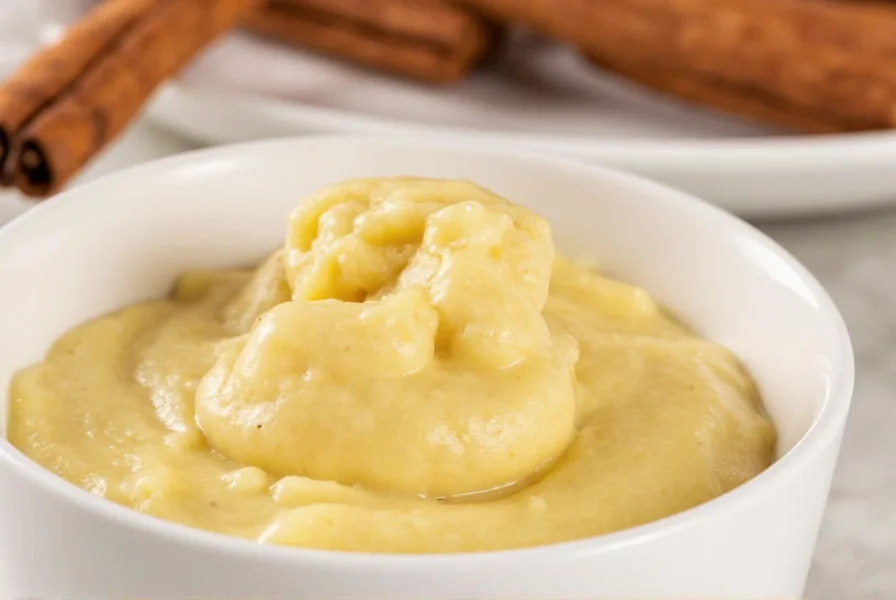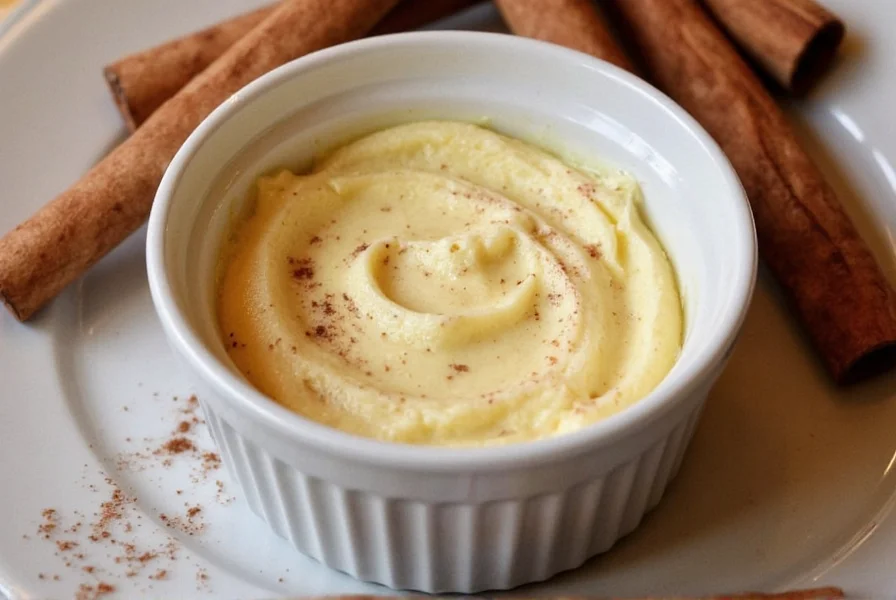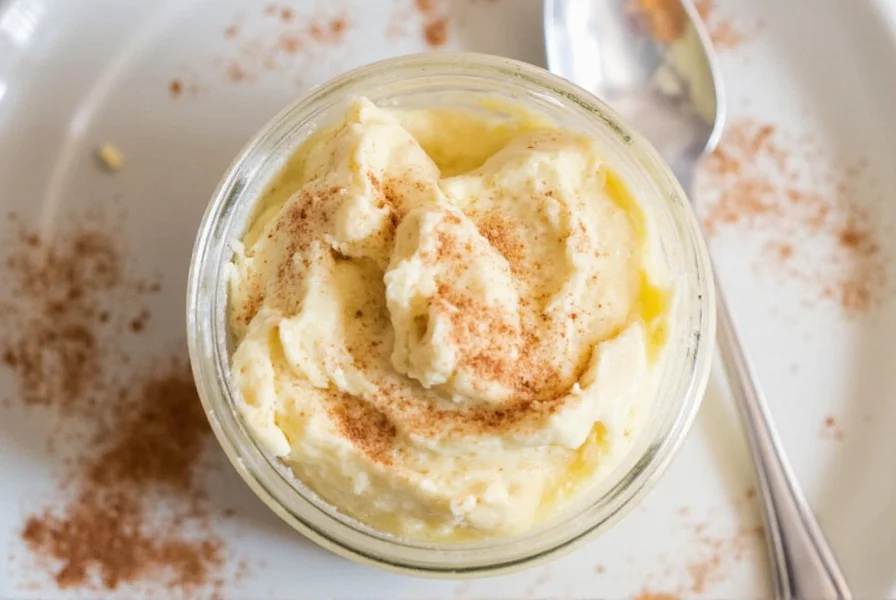Creating homemade cinnamon butter transforms ordinary butter into a fragrant, sweet spread that elevates breakfasts and desserts. Unlike store-bought versions that often contain preservatives and artificial flavors, this easy cinnamon butter recipe uses just four pantry staples for pure, natural flavor. The process takes less than five minutes with no special equipment required, making it accessible for cooks of all skill levels.
Essential Ingredients for Perfect Cinnamon Butter
The magic of this recipe lies in its simplicity and quality ingredients. Here's what you'll need for the classic version:
| Ingredient | Amount | Notes |
|---|---|---|
| Unsalted butter | 1 cup (2 sticks) | Must be softened to room temperature |
| Ground cinnamon | 1½-2 tablespoons | Use Ceylon cinnamon for milder flavor |
| Granulated sugar | 1-2 tablespoons | Adjust to taste preference |
| Salt | ¼ teaspoon | Enhances flavor complexity |

Step-by-Step Preparation Guide
Follow these straightforward steps to create perfectly textured cinnamon butter every time:
- Prepare your butter: Remove butter from refrigerator 30-60 minutes before starting. It should yield slightly when pressed but not be oily or melted.
- Combine ingredients: In a medium bowl, add softened butter, cinnamon, sugar, and salt.
- Mix thoroughly: Using a hand mixer on low speed or a sturdy spoon, blend ingredients until completely uniform in color and texture (about 2-3 minutes).
- Test and adjust: Taste a small amount and adjust cinnamon or sugar as needed. For stronger cinnamon flavor, add ¼ teaspoon at a time.
- Shape and chill: Transfer mixture to parchment paper, roll into a log, and refrigerate for at least 30 minutes to firm up.
Pro Tips for Exceptional Cinnamon Butter
Elevate your homemade cinnamon butter with these professional techniques:
- Butter temperature matters: Butter that's too cold won't incorporate evenly; too warm creates a greasy texture. Ideal temperature is 65-70°F (18-21°C).
- Cinnamon selection: Ceylon cinnamon offers a delicate, complex flavor while Cassia provides a stronger, more familiar cinnamon taste.
- Sugar alternatives: Substitute honey or maple syrup (1-2 teaspoons) for part of the sugar for floral notes that complement cinnamon beautifully.
- Texture control: For spreading consistency, keep refrigerated but remove 10 minutes before serving. For baking applications, use chilled.
Delicious Variations to Try
Once you've mastered the basic recipe, experiment with these popular cinnamon butter variations:
| Variation | Additional Ingredients | Best For |
|---|---|---|
| Honey Cinnamon Butter | 2 tbsp honey | Pancakes, waffles, biscuits |
| Vanilla Cinnamon Butter | 1 tsp vanilla extract | Toast, scones, muffins |
| Spiced Cinnamon Butter | ¼ tsp nutmeg, ⅛ tsp cloves | Pumpkin bread, apple pie |
| Lemon Cinnamon Butter | 1 tbsp lemon zest | Tea sandwiches, shortbread |

Storage and Shelf Life Guidelines
Proper storage maintains both safety and flavor quality:
- Refrigeration: Store in an airtight container for up to 2 weeks. The cold temperature preserves freshness and prevents spoilage.
- Freezing: Wrap tightly in parchment then foil, or use freezer-safe containers for up to 3 months. Thaw in refrigerator overnight.
- Room temperature: Safe for up to 2 hours during serving. Never leave butter at room temperature for extended periods.
- Preventing flavor transfer: Store away from strong-smelling foods as butter readily absorbs surrounding odors.
Creative Serving Suggestions
Move beyond basic toast with these inspired applications for your homemade cinnamon butter:
- Breakfast enhancement: Melt over warm pancakes, waffles, or French toast for instant gourmet treatment
- Baking ingredient: Use in place of regular butter in cookie or muffin recipes for subtle spice notes
- Fruit accompaniment: Serve with sliced apples, pears, or bananas for a simple, elegant dessert
- Coffee pairing: Spread on croissants or Danish pastries alongside your morning coffee
- Gift idea: Shape into decorative molds, wrap in parchment, and present as a thoughtful homemade gift
Frequently Asked Questions
Can I use salted butter instead of unsalted in cinnamon butter?
Yes, but reduce or eliminate the added salt. Salted butter typically contains about ¼ teaspoon salt per stick, so adjust accordingly to prevent oversalting. Unsalted butter gives you complete control over the salt content, which is preferable for precise flavor balancing.
Why does my cinnamon butter taste gritty?
Grittiness usually occurs when sugar hasn't fully dissolved. Ensure your butter is properly softened (65-70°F), mix thoroughly for 2-3 minutes, and consider using superfine sugar which dissolves more readily. If using honey or maple syrup, incorporate it gradually while mixing to prevent separation.
How can I make cinnamon butter without refined sugar?
Substitute 1-2 tablespoons of honey, pure maple syrup, or coconut sugar for the granulated sugar. For coconut sugar, blend it with the cinnamon first to reduce graininess. Remember that liquid sweeteners will create a slightly softer final product that may require additional chilling time.
Is homemade cinnamon butter safe for food gifts?
Yes, when properly prepared and packaged. Use fresh, high-quality ingredients, maintain proper food handling practices, and include storage instructions. For gifts, freeze the butter first, then wrap tightly in parchment and decorative foil. Include a label with 'Keep refrigerated' and 'Use within 2 weeks' for safety.











 浙公网安备
33010002000092号
浙公网安备
33010002000092号 浙B2-20120091-4
浙B2-20120091-4